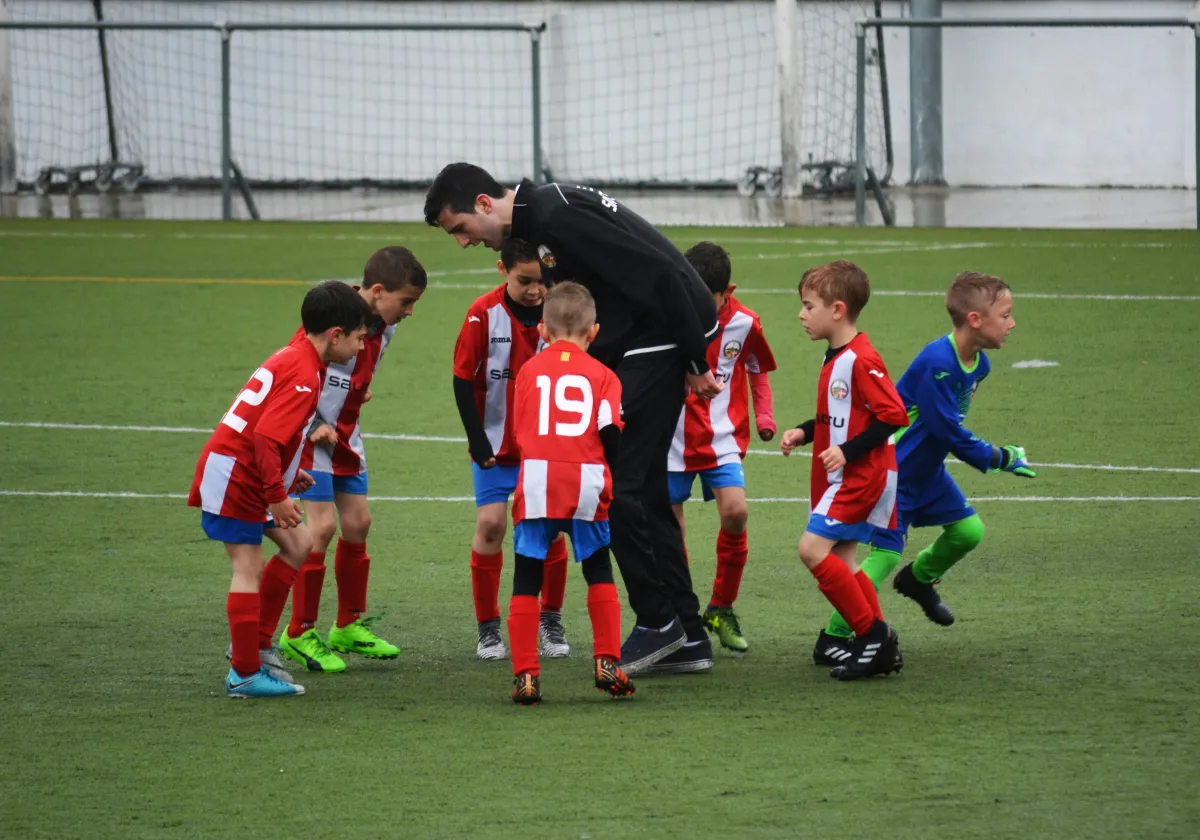Blogs
Read more on all of the mental performance and sport psychology tips to get out of your head and into the game.

The Hidden Crisis in Youth Sports: Why Kids Lose Their Joy and How to Help Them Find It Again
About the author:
Alex Bolowich s a Certified Mental Performance Consultant and founder of Elite Mental Performance, a private practice in Charlotte, North Carolina, where he specializes in working with athletes to help them perform in the most intense situations, recover from significant injuries, and mentor them through life's challenges. If you are interested in any of his signature programs, use the link here! Enjoy the article below!
The Hidden Crisis in Youth Sports: Why Kids Lose Their Joy and How to Help Them Find It Again
Why do athletes lose their "joy" for the game? How important is "having fun" in youth sports? Better yet, what type of fun should they experience and when? These answers could be what keeps athletes in their sport, helping them reach higher levels while maintaining their love for the game.
What no one tells athletes—or their parents—is that there's a hidden problem lurking beneath the surface of competitive youth sports. Many young players struggle silently, feeling confused and trapped, ultimately losing their joy for the game they once loved. And worse yet, the onset of this starts years before it shows up on the surface.
When I ask athletes why they compete, I've heard these words too often from the athletes I work with: "I committed my whole life to this sport, so I can't quit now." The tragedy is that these players don't realize their purpose for playing should be future-oriented. Without something meaningful to play for in the future, they're just paying a debt to their past selves—and that's a recipe for resentment and burnout.
Understanding the Three Types of "Fun" in Youth Sports
What does "fun" actually mean in the context of sports? There are actually three distinct types of fun that athletes experience throughout their development, and understanding this evolution is crucial for parents and coaches who want to help athletes maintain their love for the game.
The First Two: Recreational and Social Fun (Ages 4-10)
When children first step onto the sports field at ages 4-10, they experience what we call "recreational fun." This is the pure joy of moving their bodies, kicking the ball with abandon, and playing imaginatively—often dreaming they'll become professional athletes someday. It is simple... it is just backyard sports at this time.
During this same period, children develop "social fun," where the relationships with teammates become fundamental to their mental and emotional wellbeing. The camaraderie, inside jokes, and friendships formed during practices, games, and team events create powerful positive associations with the sport. This combination of recreational and social enjoyment is typically when sport is at its peak of pure joy—children love playing and cherish the connections they make with friends.
The Critical Transition: Introducing Competitive Fun (Ages 10-13)
Between ages 10-13, children get introduced to more structured competition—the third type of fun. Tournaments become more important, and the emotional highs of winning (and lows of losing) become more pronounced. This is the pivotal stage where young athletes either develop "competitive fun" or they don't.
Here's where things get tricky: as competitive fun gets introduced, the other two forms of fun—recreational and social—can begin to fade if not carefully preserved. The influence of parents and coaches during this critical transition period cannot be overstated. If adults throw too much "gasoline on the competitive fire" too quickly, they risk burning out the recreational and social aspects of fun completely before players are emotionally mature enough to handle that shift.
According to the Journal of Sport Behavior (2022), a staggering 70% of kids drop out of organized sports by age 13 due to pressure, burnout and declining self-efficacy. This statistic highlights just how critical this transitional period is, and why educating athletes on finding a healthy balance between all three types of fun matters so much.
Ages 14-18: When "Social Fun" Becomes "Social Pressure"
As teenagers, the "social fun" that once motivated players often transforms into "social pressure." Status among peers becomes a priority, typically based on athletic performance. The recreational aspect diminishes as their sport becomes primarily a vehicle to pursue goals like playing professionally or in college.
This is where resentment can take root. The sport that was once loved for its own sake becomes merely a means to an end. When players struggle to reach their desired destination, they begin to detach from their love of the game. The pressure of "time running out" starts to set in. Your self-esteem developed earlier in childhood is now overshadowed by social-esteem and where you "rank" amongst your teammates and friends.
Not only is the pressure to perform higher for the social recognition, but the opportunities start to become less, as your coaches start to introduce playing time as being earned instead of given.
Ages 18-21: The College Years – "Do or Die"
The college environment represents the culmination of this progression, where the sport becomes completely cutthroat. At this level, nearly all recreational fun has disappeared, social aspects become secondary to performance, and competitive pressure reaches its peak. College athletes face:
Intense performance expectations from coaches whose jobs depend on results
The pressure of scholarship maintenance or advancement
Limited playing time with consequences for those who don't perform
Physical demands that require year-round commitment
Academic requirements on top of athletic obligations
This is truly the "do or die" phase of an athlete's career. Without the proper foundation of competitive fun established in their early teens, college athletes often find themselves in a joyless grind, questioning why they continue to play at all. Many who reach this level without having developed healthy competitive enjoyment end up burning out, quitting, or finishing their careers with emotional scars rather than fond memories.
This harsh reality of the college years makes it even more critical that athletes develop a balanced relationship with competition during those pivotal 10-13 years, when they can still integrate competitive challenges into their existing framework of recreational and social enjoyment.
Three Essential Practices for Lifelong Athletic Joy
Here are three of the more common ways to prevent this detachment and maintain a healthy relationship with the sport throughout an athlete's career, I recommend focusing on these three consistent practices:
1. Cultivate Gratitude
Mental training often works best through consistent reminders. Having your young athlete keep a sports journal where they express three things they're grateful for after each game can significantly improve their relationship with competition. Gratitude is the emotional expression of love. This practice gradually fills their emotional cup with joy even as external pressures try to drain it.
2. Prioritize Skill Mastery Over Outcomes
Help your child focus more on developing new skills rather than fixating on outcomes. Celebrate when they successfully use their weaker foot in a game instead of getting wrapped up in concerns about playing time or team placement. This shift in focus nurtures intrinsic motivation rather than external validation.
3. Embrace Standards Over Expectations
Expectations can be the thief of joy. Try this revealing exercise: type "expectations are" into Google without hitting enter, and notice how many negative autocomplete suggestions appear. Instead of burdening your athlete with expectations, help them establish personal standards—non-negotiable core behaviors that remain consistent regardless of circumstances. This approach builds confidence and resilience that transcends any particular game or season.
The Crucial Balance: Preserving All Three Types of Fun
When children reach approximately age 13, you'll notice that coaches typically become much more competitive. These coaches likely still derive enjoyment from competition itself, but many young athletes haven't yet fully developed that capacity. The disconnect happens when adults assume young players are ready to derive most of their enjoyment from competition alone, without the recreational and social aspects that initially drew them to the sport.
The balancing act here is delicate. Competitive fun needs to be introduced gradually, while deliberately preserving spaces for recreational and social fun to continue flourishing. Too often, the intensity of competition crowds out the other forms of enjoyment before athletes have developed the emotional maturity to find true satisfaction in competitive challenges alone.
I strongly recommend that between ages 12-14, parents and coaches collaborate with sport psychologists or mental performance consultants to gradually implement messages and practices that equip athletes for the challenges of competition while intentionally preserving all three types of fun. This balanced approach gives young athletes the best chance to develop a multifaceted relationship with their sport that can sustain them through challenges.

The Nature of Competition
At its core, competition is a filter system designed to eliminate participants. The further athletes advance, the more intense the pressure becomes—and competition has no regard for feelings. Without properly positioning themselves to embrace this journey and find enjoyment within it, young athletes risk experiencing stress, poor performances, burnout, and resentment.
The last thing any parent wants is for their child to retire from sports with distressing memories of their athletic career. By understanding how "fun" evolves throughout a young athlete's development and by implementing these practical strategies, we can help our children navigate the competitive landscape while maintaining their love for the beautiful game.
If you're looking for someone to help your athlete overcome mental blocks, perform to their peak level more consistently, and feel the joy along the way, sign up for consultation with the link below. Hope you enjoyed the article and were able to take away valuable information!

Professional Basketball

NCAA Student-Athletes

Youth Professional Soccer

Professional Soccer

Professional Soccer

PGA Jr. Golf
© 2025 ELITE MENTAL PERFORMANCE LLC



